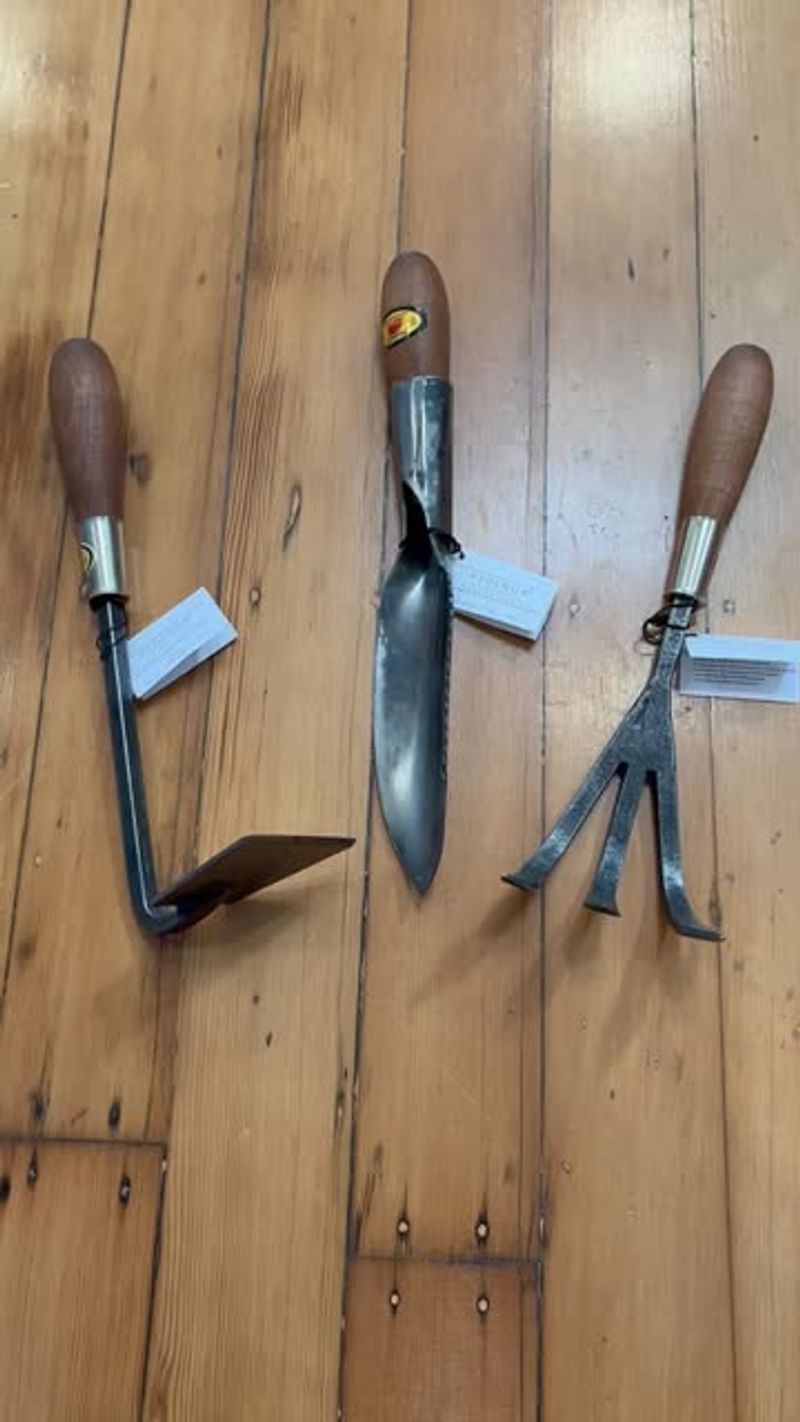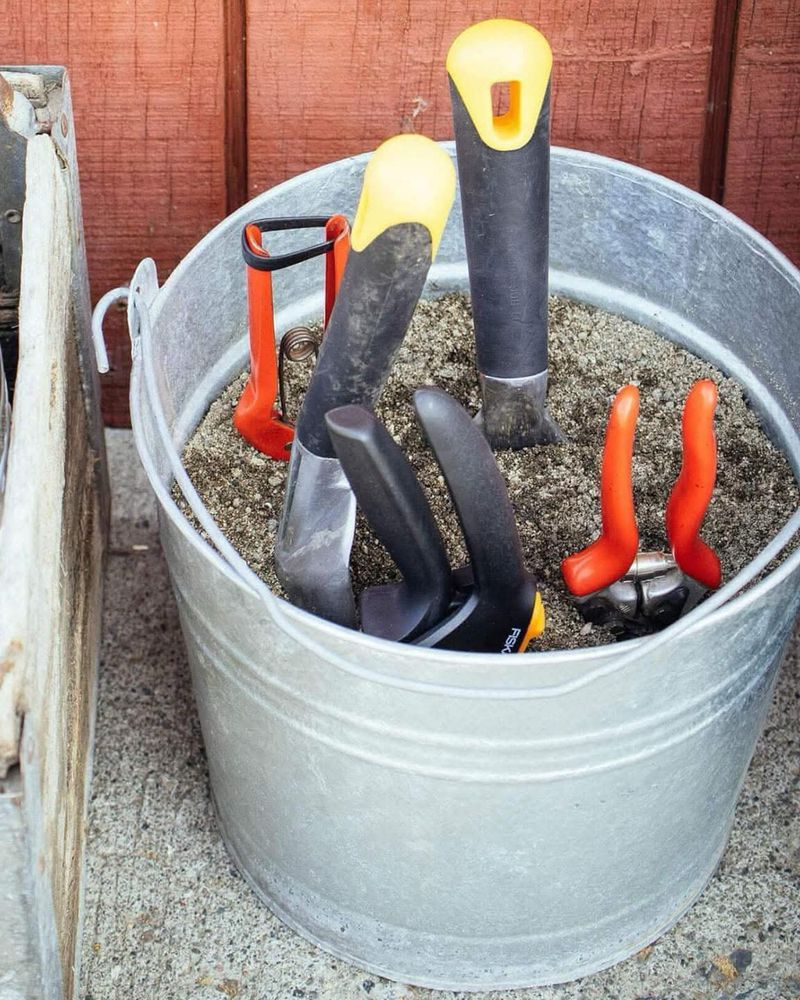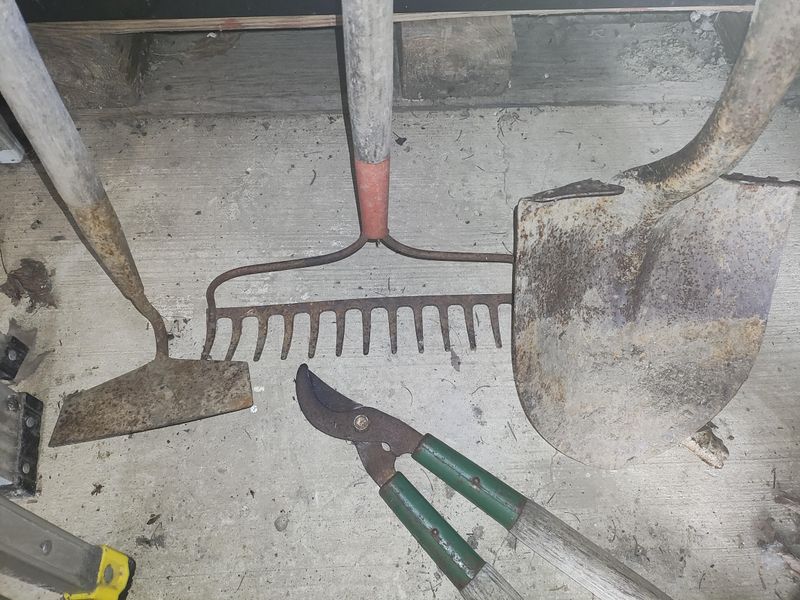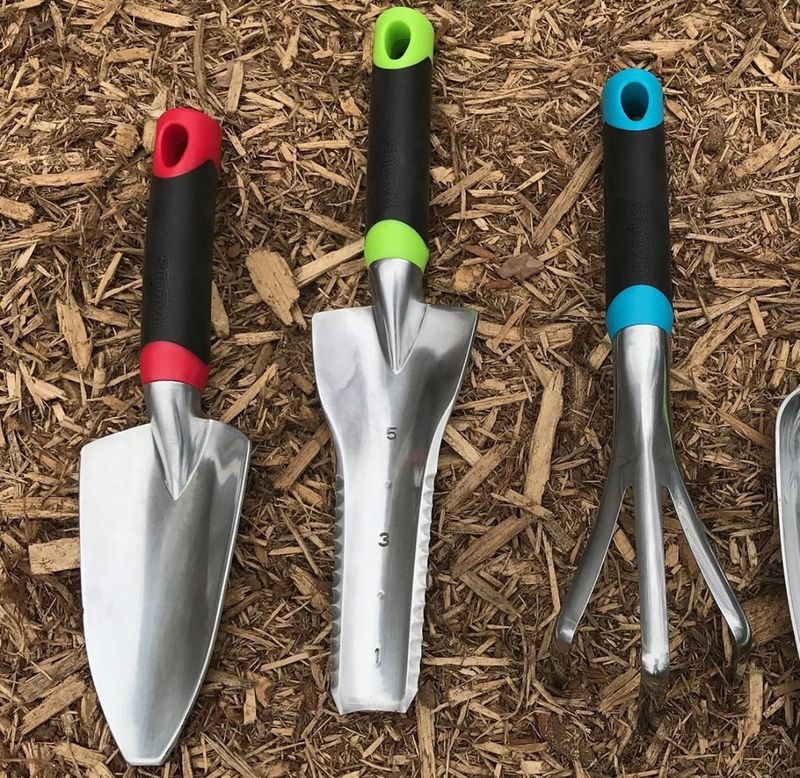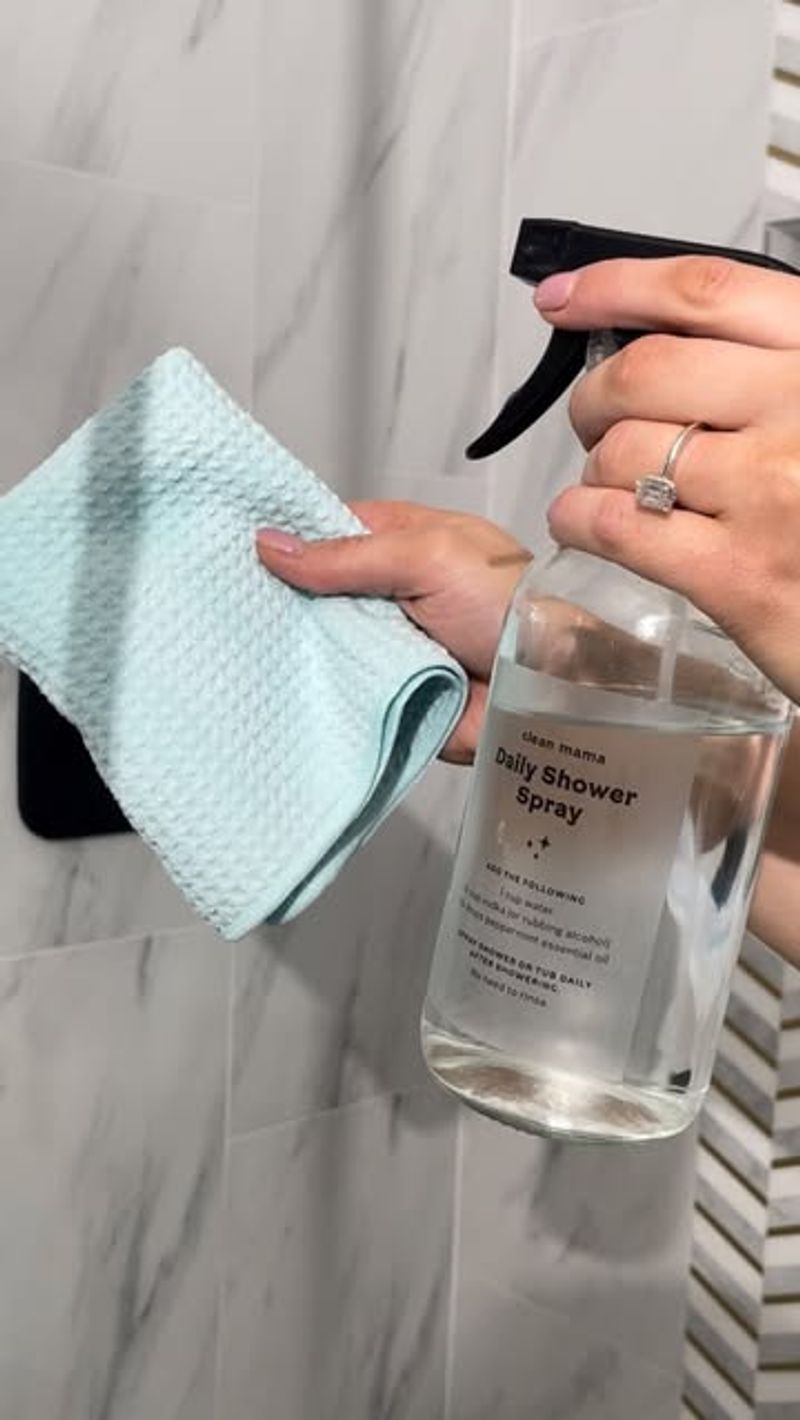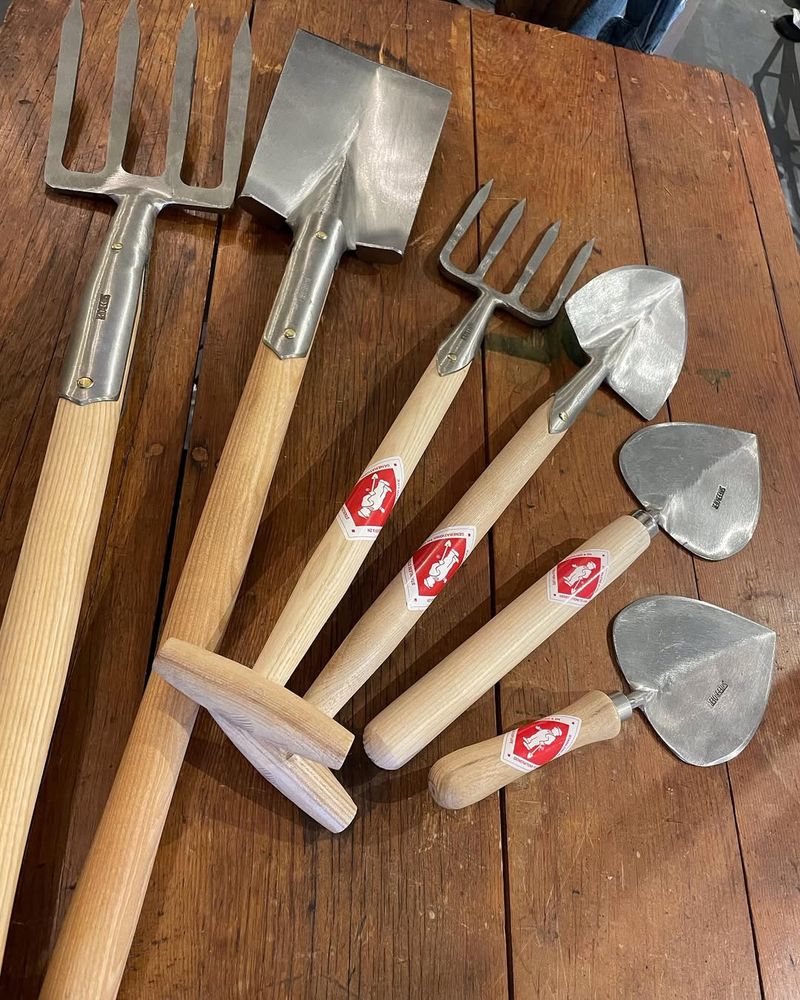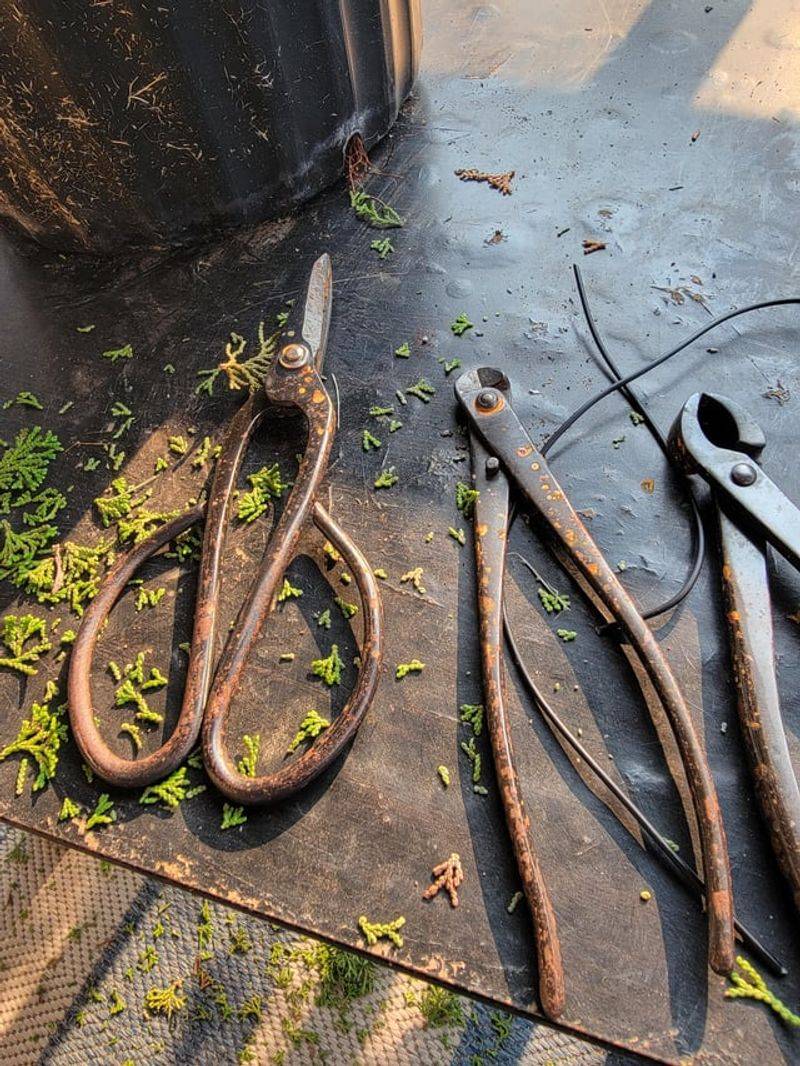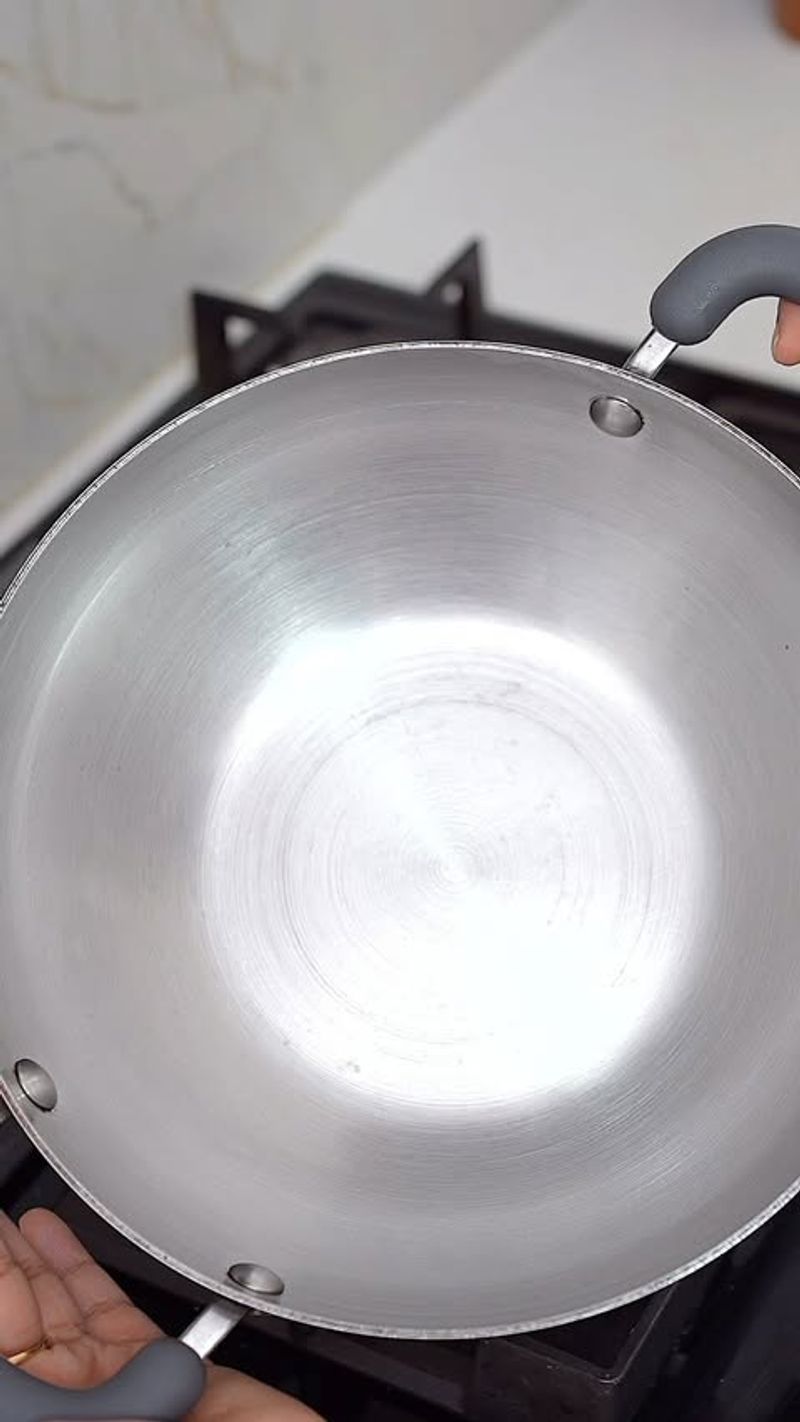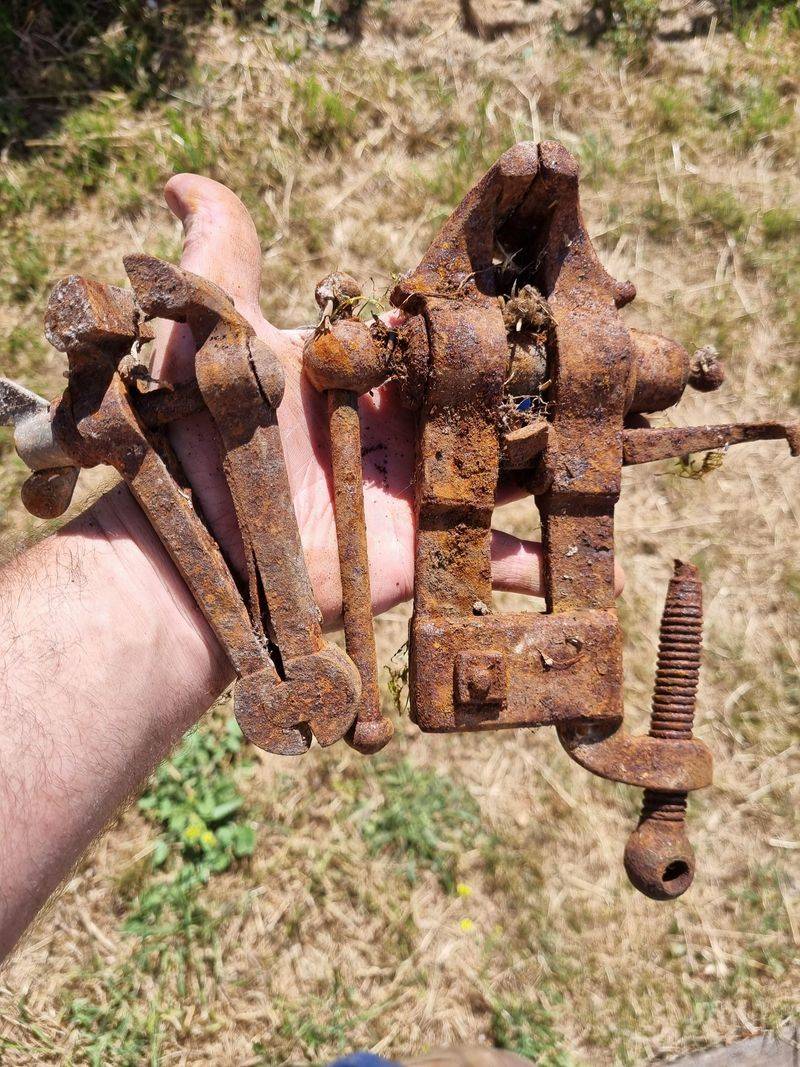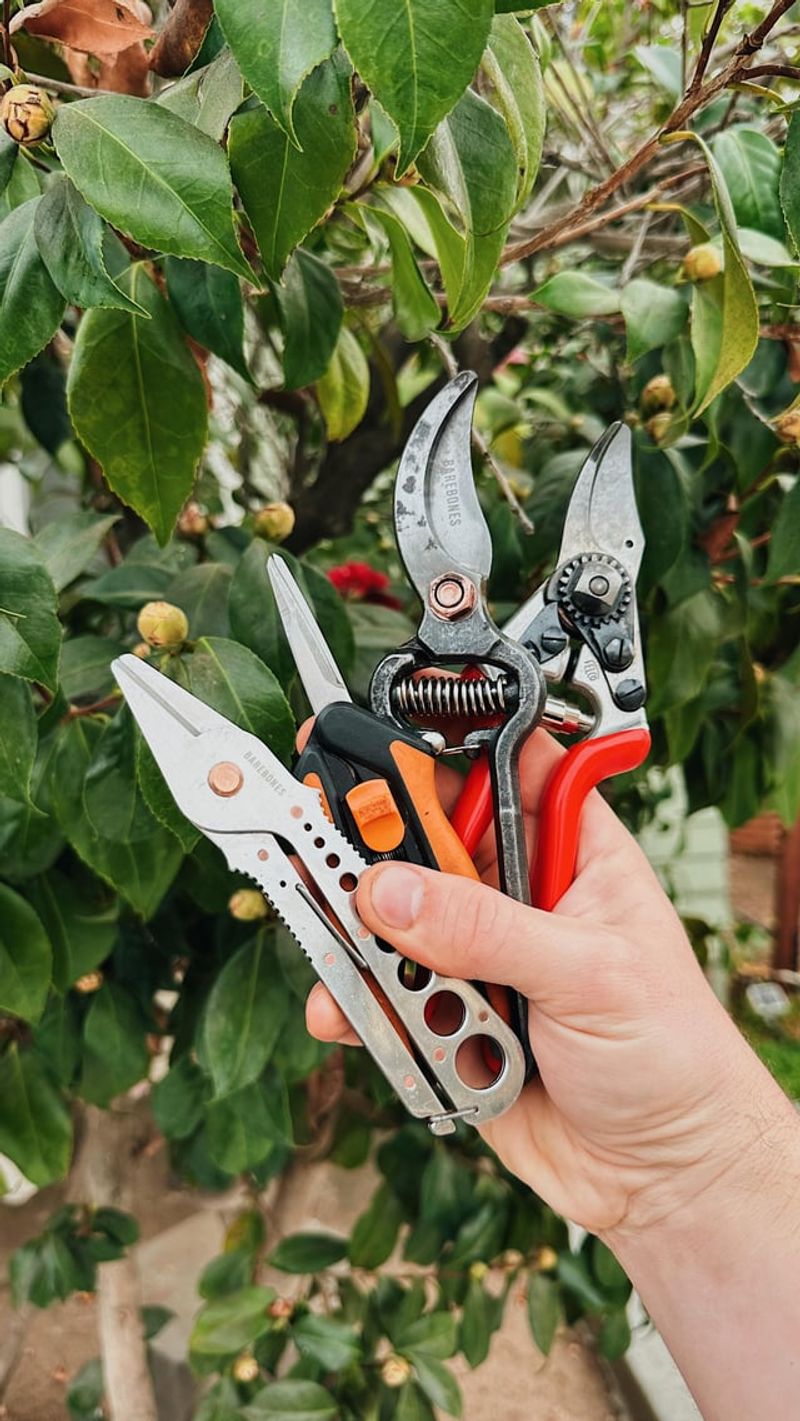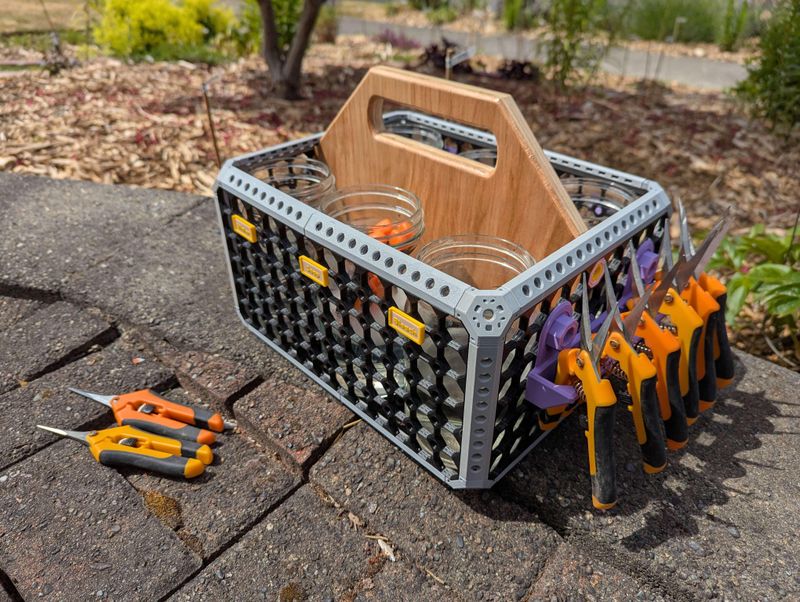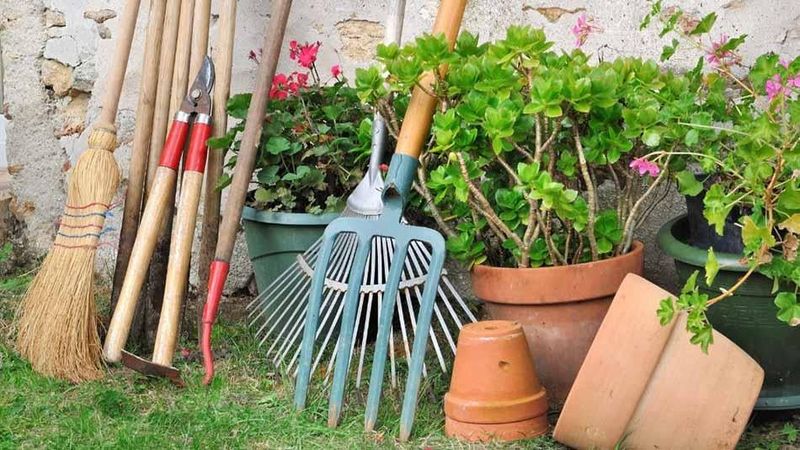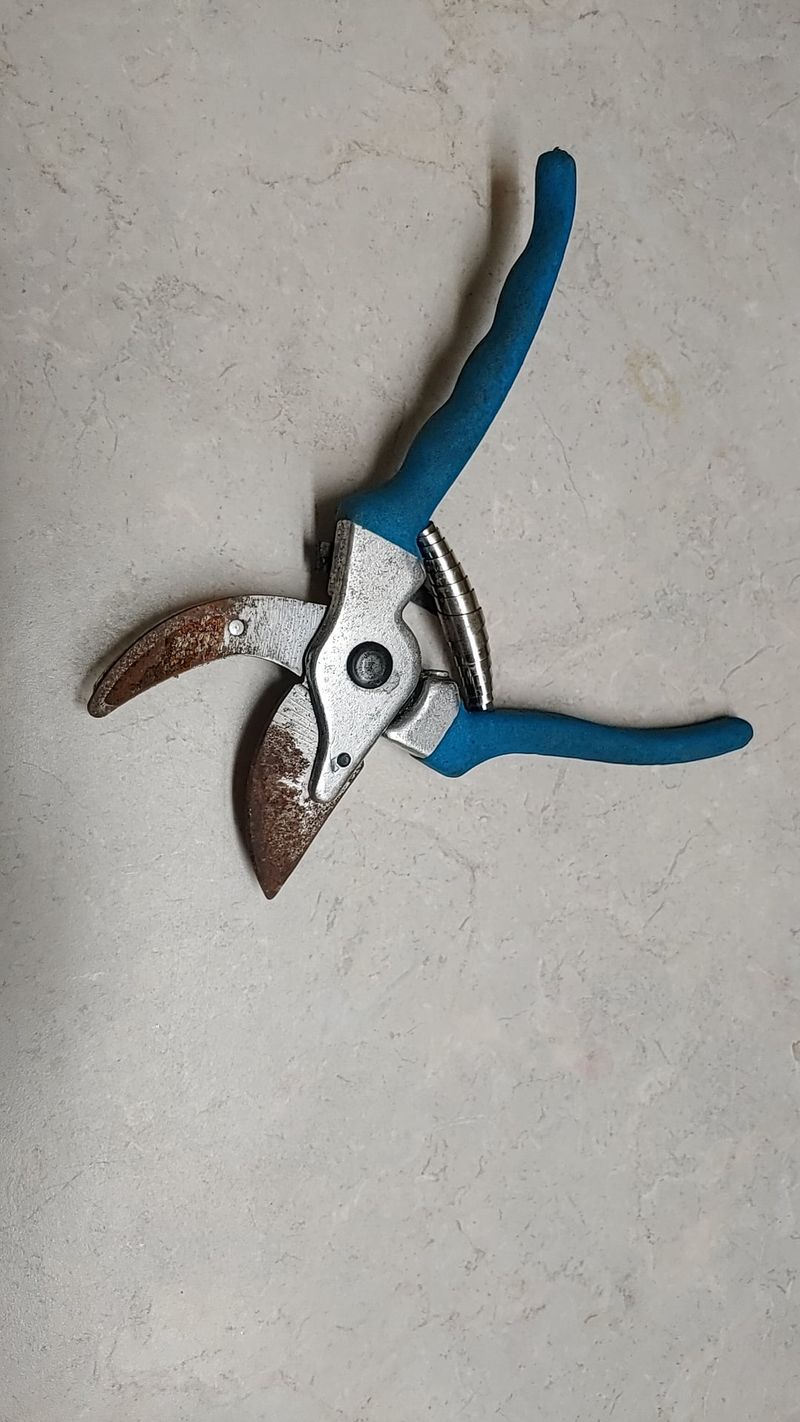Keeping your gardening tools clean doesn’t have to be a big chore—most tricks take just a few minutes and make a huge difference. I’ve learned that a quick clean here and there helps plants stay healthier and tools last longer.
No fancy products or hours of scrubbing required, I promise. These easy hacks fit right into your routine without slowing you down.
Let’s make cleaning up just as satisfying as digging in!
1. Vinegar Soak Solution
Fill a bucket with white vinegar and submerge rusty tools for 8-10 minutes. The natural acids break down rust and sanitize simultaneously, eliminating harmful pathogens that could infect plants.
Once soaked, simply wipe tools with a cloth and watch years of grime disappear. This method costs pennies compared to commercial cleaners and uses ingredients you already have at home.
2. Sand Bucket Sharpener
Mix mineral oil and coarse sand in a 5-gallon bucket. Each time you finish gardening, plunge pruners and trowels into this mixture several times. The sand scours away dirt while the oil prevents rust.
Keep the bucket near your garden entrance as a quick cleaning station. This 30-second habit maintains sharp edges on your tools and prevents soil-borne diseases from spreading between plants.
3. Lemon Juice Rust Remover
Squeeze fresh lemon juice onto rusty spots and let sit for 5 minutes. The citric acid naturally dissolves oxidation without harsh chemicals. Scrub with an old toothbrush to reach tight corners and crevices.
Rinse with water and dry thoroughly afterward. This method works wonders on small hand tools like pruners and trowels, leaving them looking almost new while removing potential disease carriers.
4. Baking Soda Paste Scrub
Create a thick paste using baking soda and a splash of water. Apply to grimy tools and let sit for 3 minutes before scrubbing with a stiff brush. The mild abrasive action removes caked-on soil without scratching metal surfaces.
Works especially well on trowels and spades that contact soil directly. This gentle yet effective cleaner disinfects while removing potentially harmful soil residues that could harbor plant pathogens.
5. Rubbing Alcohol Spray
Fill a spray bottle with 70% isopropyl alcohol for instant tool sanitizing between plants. Especially crucial when pruning diseased specimens to prevent spreading problems throughout your garden. The alcohol evaporates quickly, requiring no rinsing.
Keep the spray bottle in your garden caddy for easy access. This 30-second disinfecting step can save entire plant collections from devastating diseases that commonly spread via pruning tools.
6. Potato Rust Treatment
Cut a potato in half and press the cut side against rusty spots on garden tools. The oxalic acid in potatoes naturally dissolves rust. Leave the potato juice on for 5 minutes before scrubbing with steel wool.
Rinse and dry thoroughly afterward. This kitchen scrap solution transforms neglected tools without harsh chemicals, proving that effective cleaning doesn’t require expensive products or complicated techniques.
7. WD-40 Quick Shine
Spray WD-40 on clean, dry tools and wipe with a cloth for instant protection. The thin protective layer repels moisture and prevents rust formation. Perfect for quick maintenance between deep cleanings.
Focus on hinges and moving parts that tend to seize up. This 2-minute application extends tool life significantly, saving you money while ensuring cutting tools work efficiently without crushing stems that could invite disease.
8. Boiling Water Soak
Pour boiling water over tools to kill pathogens and soften caked-on dirt. Let soak for 5 minutes, then scrub with a brush. This method is especially effective for tools used on diseased plants.
The heat sanitizes while loosening stubborn debris. For wooden handles, limit soaking to metal parts only. This chemical-free approach provides peace of mind when dealing with serious plant diseases that could devastate your garden.
9. Tea Tree Oil Disinfectant
Add 20 drops of tea tree oil to a spray bottle filled with water. Mist tools after cleaning to kill remaining bacteria and fungi. The natural antiseptic properties make this perfect for pruners used on multiple plants.
Allow tools to air dry completely. This aromatic solution leaves a pleasant scent while providing powerful protection against common plant pathogens that often hide in microscopic tool crevices.
10. Motor Oil Wipe
Dab a small amount of used motor oil on a rag and wipe metal surfaces after cleaning. The thick oil creates a protective barrier against moisture and prevents rust formation even during humid seasons.
Best for tools stored for extended periods. While not ideal for frequent-use items, this recycled garage staple gives new life to seasonal tools like bulb planters and aerators that might otherwise rust between uses.
11. Steel Wool Scrubber
Keep fine-grade steel wool pads by your garden sink for quick tool touch-ups. Dip in soapy water and scrub in circular motions to remove light rust and dirt. The fine metal fibers reach into grooves without damaging the tool surface.
Rinse thoroughly and dry with a towel. This 3-minute maintenance routine keeps pruners and snips working like new, ensuring clean cuts that heal quickly without inviting disease.
12. Hydrogen Peroxide Bath
Soak tools in 3% hydrogen peroxide for 10 minutes to kill pathogens. The bubbling action helps lift dirt while sanitizing. Perfect for tools used around plants with fungal issues or suspicious symptoms.
Rinse with clean water and dry thoroughly afterward. This inexpensive solution from your medicine cabinet provides hospital-grade disinfection for tools that might otherwise spread devastating diseases throughout your garden.
13. Coconut Oil Polish
Rub a thin layer of coconut oil on wooden handles with a cloth. The natural oil conditions the wood, preventing cracks and extending handle life. Unlike petroleum products, this food-grade oil is safe around edible plants.
Apply monthly for best results. This nourishing treatment not only preserves tools but also makes them more comfortable to use, preventing splinters and creating a smooth grip even during long gardening sessions.
14. Sandpaper Rejuvenation
Keep medium-grit sandpaper in your tool shed for quick wooden handle maintenance. A few strokes removes splinters and smooths rough patches in seconds. Focus on areas showing wear or water damage.
Follow with oil treatment for complete protection. This simple maintenance prevents painful splinters while extending the life of expensive tools. The smooth finish improves grip and control when performing precise garden tasks.
15. Silica Gel Storage
Save silica gel packets from product packaging and place them in your tool storage area. These moisture-absorbing packets prevent humidity buildup that leads to rust. Particularly useful in garden sheds and garages.
Replace packets every few months for continued protection. This zero-effort trick creates a drier microclimate around your tools, dramatically reducing rust formation without any scrubbing or cleaning required.


